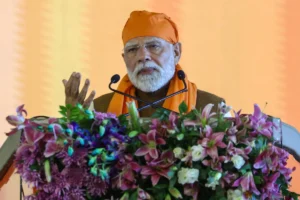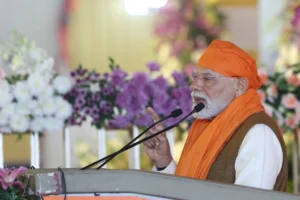
For the first time, researchers used the Giant Meterwave Radio Telescope (GMRT) to analyze disturbances in the Earth’s ionosphere, which had previously been spotted using satellites.
According to Sarvesh Mangala of the National Centre for Radio Astrophysics, a greater understanding of the ionosphere can assist in enhancing the precision of location, navigation, and timing services, generally known as GPS services, as well as studying radio galaxies.
Mangla is the main author of a study published in the peer-reviewed journal Geophysical Research Letters.
At the observing frequencies of 235 MHz and 610 MHz, Mangla and his mentor Prof Abhirup Datta of IIT-Indore successfully identified many medium-scale traveling ionospheric disturbances (TIDs) with a range of 100 to 300 km and small-scale TIDs with a range of 10 km.
Mangla was with the IIT-Indore and has recently joined the NCRA.
The study claims to have observed unexpected changes in the ionosphere during the sunrise hours, significant ionospheric disturbances, and smaller-scale structures moving in the same direction.
Scientists leveraged the GMRT’s exceptional sensitivity to detect and characterize TIDs in a nearly nine-hour observation taken on an intervening night between August 5, 2012, and August 6, 2012.
Datta from the Department of Astronomy, Astrophysics, and Space Engineering, IIT Indore, stated, “While previous studies have investigated ionospheric disturbances at mid-latitude and high-latitude, this study is one of the first to employ a low-latitude instrument (placed closer to the Earth’s magnetic equator) effectively for detecting changes in electron density in the ionosphere”.
The discoveries have the potential to increase ionosphere knowledge and models, resulting in improved technologies and more accurate measurements for navigation and communication.
Radio telescopes, unlike Global Navigation Satellite System measurements, are not typical ionospheric probes.
The GMRT, located in the low-latitude region, has proven to be quite successful in detecting various ionospheric phenomena.
“Using the GMRT, the authors have demonstrated the capability to achieve precise measurements of ionospheric variations with higher sensitivity compared to GPS and radar instruments”, according to a statement from the NCRA, which operates the GMRT in Khodad, some 80 km from Pune.
Yashwant Gupta, Centre Director of the NCRA, which is part of the Tata Institute of Fundamental Research, stated, “This kind of result is something we had all along believed to be possible with the GMRT, and I am very pleased this team led by colleagues from IIT Indore has clearly demonstrated this, thereby opening a new window of research with the GMRT”.
Also read: Jaume Collet-Serra To Direct Emily Blunt’s Next Film
To read more such news, download Bharat Express news apps


















